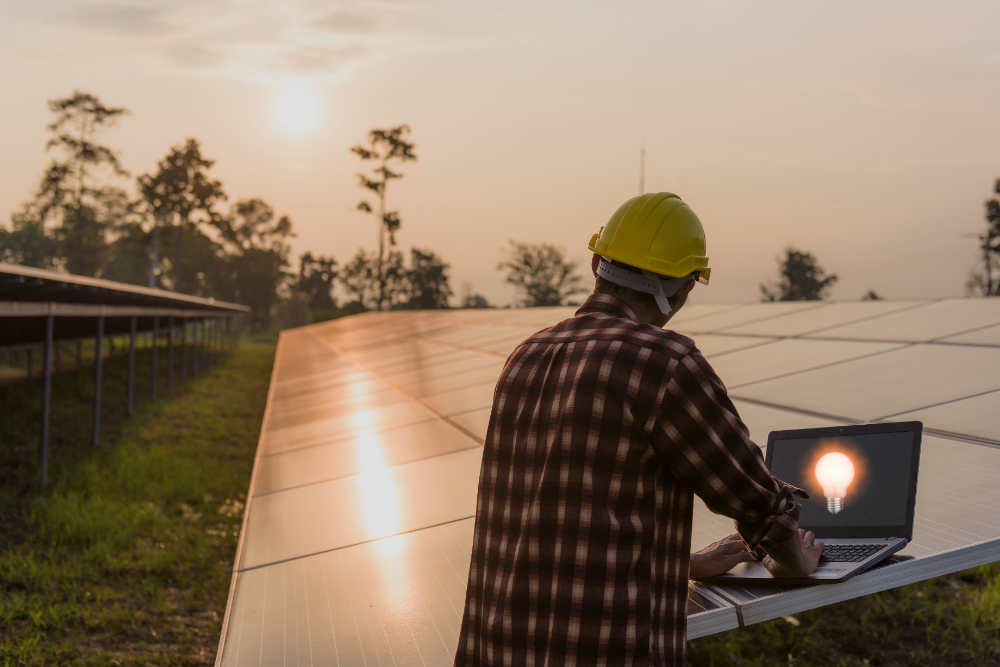Understanding On-Grid and Off-Grid Solar Systems
Solar power systems are categorized into two primary types: on-grid and off-grid. Each system offers distinct advantages and is suitable for different scenarios. Let’s explore the details to help you decide which system suits your needs.
On-Grid Solar Systems
How It Works:
-
Grid-Connected: An on-grid system is directly connected to the utility grid.
-
Power Generation: Solar panels generate electricity during daylight hours.
-
Excess Power: Any excess electricity is fed back into the grid, earning you credits or compensation.
-
Grid Power Backup: During nighttime or cloudy days, you can draw power from the grid
Key Advantages:
-
Lower Upfront Costs: No need for expensive batteries.
-
Reliable Power Supply: The utility grid acts as a backup.
-
Energy Credits: You can save on electricity bills or earn through feed-in tariffs by selling excess power.
Key Disadvantages:
-
Vulnerability to Grid Outages: The system stops supplying power if the grid goes down.
-
Dependence on the Grid: Limited control over energy autonomy.
Off-Grid Solar Systems
How It Works:
-
Standalone System: Operates independently of the utility grid.
-
Energy Storage: Batteries store excess solar energy for nighttime or cloudy day use.
-
Independent Power Supply: Provides consistent power regardless of grid conditions.
Key Advantages:
-
Energy Independence: No reliance on the utility grid.
-
Reliable in Remote Areas: Ideal for locations with limited or no grid access.
-
Uninterrupted Power Supply: Operates even during grid outages.
Key Disadvantages:
-
Higher Upfront Costs: Requires investment in batteries and storage solutions.
-
Complex Maintenance: Batteries and system components need regular care.
-
Limited Storage Capacity: The system’s efficiency depends on battery storage size.
Choosing the Right System
The ideal solar power system for your needs depends on various factors:
-
Grid Reliability: On-grid systems may be preferable in areas with stable grid access.
-
Energy Consumption: Evaluate your daily energy usage and specific power requirements.
-
Budget: Consider the higher initial costs of off-grid systems due to battery storage.
-
Local Incentives: Check for government subsidies, tax benefits, or feed-in tariff programs.
-
Environmental Goals: Both systems reduce carbon emissions, but off-grid systems offer greater independence from fossil fuels.
Key Components of a Solar Power System
Regardless of the type, solar power systems share core components:
-
Solar Panels: Convert sunlight into direct current (DC) electricity.
-
Inverter: Transforms DC power into alternating current (AC) power for household use.
-
Charge Controller: Manages battery charging in off-grid systems to prevent overcharging.
-
Batteries (Off-Grid Only): Store excess solar energy for later use.
-
Mounting System: Secures the solar panels to your roof or the ground.
Installation and Maintenance
-
Professional Installation: Hiring certified solar installers ensures your system is safe and efficient.
-
Regular Maintenance: Periodic cleaning of solar panels and inspection of system components can optimize performance.
-
Battery Care (Off-Grid Systems): Batteries require regular maintenance, including monitoring charge cycles and replacing worn components.
By understanding the key differences and consulting with experts, you can select a solar power system tailored to your energy needs and lifestyle. At SuncoSolar, we specialize in providing sustainable energy solutions designed for efficiency and reliability. Whether you want to reduce your energy bills or achieve total energy independence, we’re here to help.
Contact SuncoSolar today to find your perfect solar solution!

